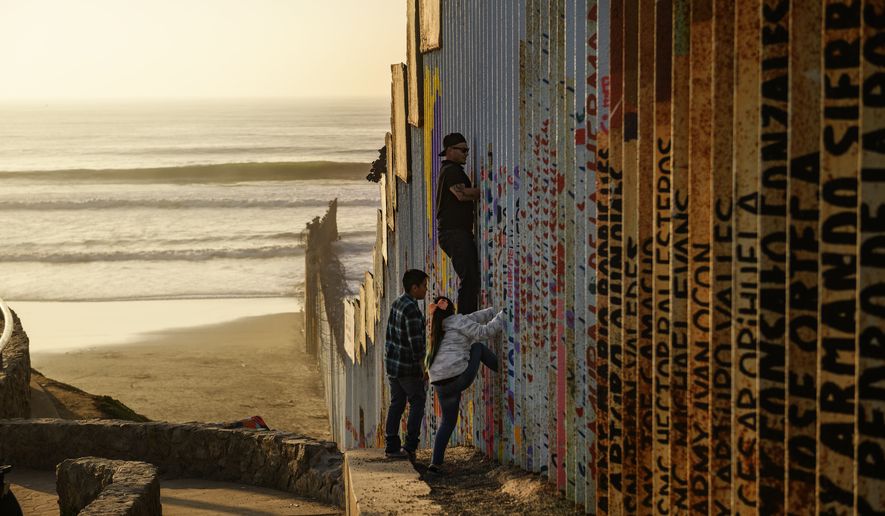Homeland Security officials revealed Tuesday that 240 migrants have been returned to Mexico to wait while their immigration cases proceed in the U.S., marking a relatively slow start to the Trump administration’s newest get-tough policy.
Under the Migrant Protection Protocol, some of those found jumping the border or trying to enter through a legal border crossing without permission are being processed then turned around and sent back across the border to wait.
The goal was to deny them the chance to gain a foothold in the U.S. while waiting for their deportation cases to be heard. Hundreds of thousands of immigrants living illegally in the U.S. have disappeared into the shadows over the last few years, aided by case backlogs and the inability of the government to detain them.
Officials briefing reporters Tuesday said they have started slow, testing the protocol at one border crossing for several weeks before expanding to a second border crossing and some areas between the ports of entry in California.
“We want to take a very small and methodical approach,” one official said.
The Migrant Protection Protocol, also dubbed “return-to-Mexico,” uses a part of U.S. law that allows the government to make people who show up without permission wait outside the U.S. while their cases proceed.
Homeland Security Secretary Kirstjen Nielsen announced the move late last year, and it began to be implemented in January, according to immigrant-rights groups who have challenged it in court.
The Trump administration says it alone made the decision, though it is working with Mexican authorities who must be ready to receive the people being sent back.
The slow start to the program is intentional, giving both countries a chance to work out kinks and ramp up numbers.
Originally, only the San Ysidro Port of Entry in California was affected, and on average only a handful of people each day were returned. Over the past week, the program expanded to the Calexico border crossing and to immigrants nabbed trying to cross illegally between the ports of entry in the Border Patrol’s San Diego sector.
Immigration cases can take years to work through.
Those subject to the new protocol are usually Central American families, who have streamed north in increasing numbers this decade.
The groups that sued to stop the MPP argue that the families are fleeing gang violence at home in Central America, and making them wait in Mexico leaves them vulnerable to the same dangers.
“Asylum seekers in Mexico face a heightened risk of kidnapping, disappearance, trafficking, sexual assault and murder, among other harms,” the groups argued.
Their case is pending in a federal court in California.
• Stephen Dinan can be reached at sdinan@washingtontimes.com.




Please read our comment policy before commenting.